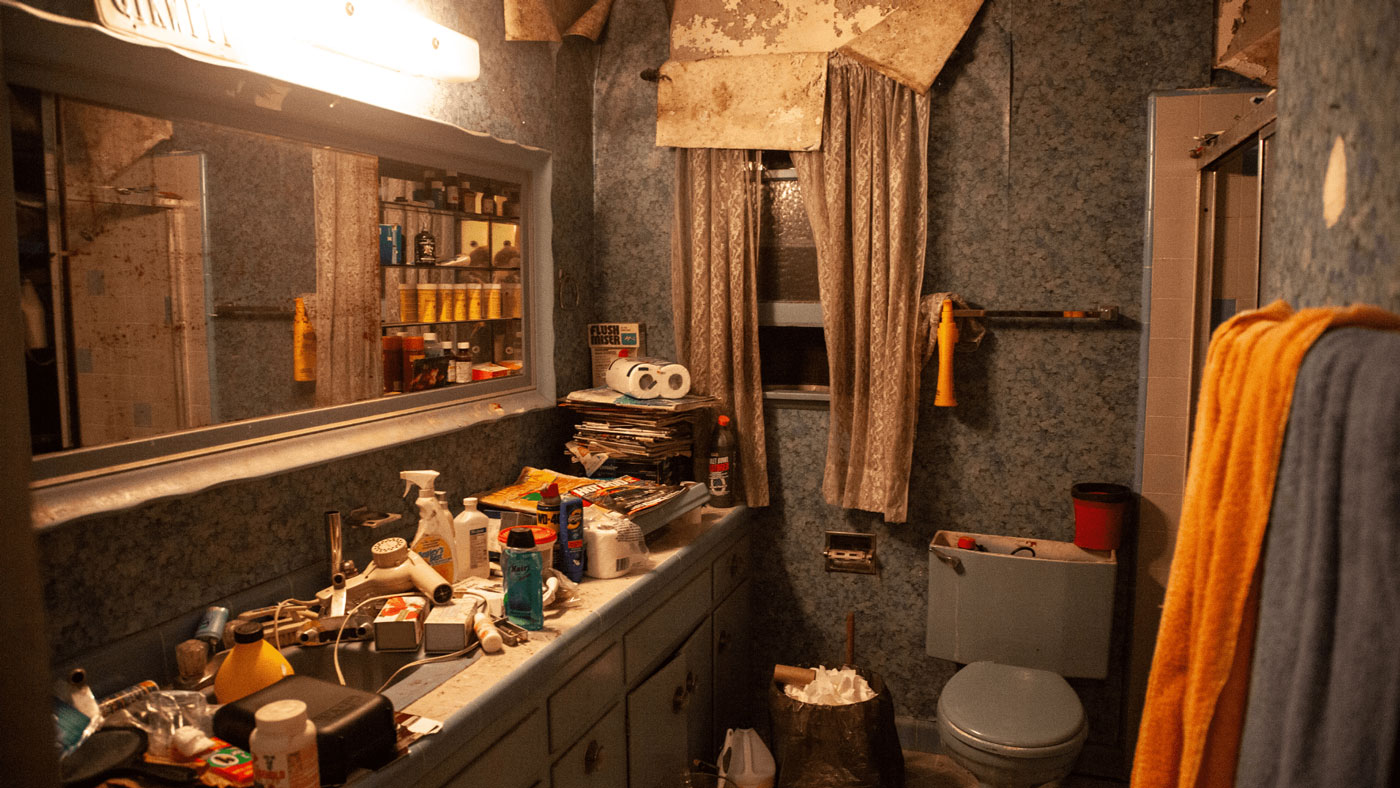Understanding The 5 Stages of Hoarding

- Hoarding affects close to 2.6% of all Americans according to American Psychiatry Association.
- Hoarding was added to the DSM-5 for the first time in 2012.
- The five stages of hoarding are minimal clutter, mild clutter, moderate clutter, severe clutter, and extreme clutter.
- Signs of hoarding include acquisition, clutter, difficulty discarding, disorganization, difficulty with decision-making, social isolation and impairment.
Hoarders are people who have difficulty giving up their possessions or consistently accumulate more. Far from simply existing as isolated cases of exaggerated reality TV fodder, this condition affects close to 2.6% of all Americans, according to the American Psychiatry Association. [1]
There are different levels of hoarding, which encompass minimal, mild, moderate, severe, and extreme clutter. Each level of advancement brings increasingly significant health risks to the hoarder and any close associates.
Practice extreme caution when attempting to help anybody experiencing clinical hoarding disorder, and do not be afraid to call in mental health professionals. But first, let’s define terms.
What is Hoarding?
Hoarding behavior presents itself as growing piles of possessions in a person’s residence. These possessions can run the spectrum from the extremely sentimental, like family heirlooms or pets, to the extremely mundane, like trash on the street.
It often presents during the teenage years and grows stronger into adulthood. It affects women and men at generally similar rates.[2]
Hoarders will generally hide this behavior from others to their own detriment. Some hoarders understand that they have a problem, while others do not see a problem. Some clinical hoarding symptoms include:[1]
- Persistent difficulty parting with possessions, no matter their real or perceived value.
- The feeling of acute distress, paranoia, or grief associated with discarding possessions.
- Accumulation of possessions that clutter active living areas and substantially impede their intended use or safe exit.
Is Hoarding a Disorder?
A disorder is an “abnormal physical or mental condition” which affects normal functions.[3] In December 2012, mental health professionals added Hoarding Disorder to the DSM-5 for the first time. The neurobiology of Hoarding Disorder (HD) is only just beginning to be understood.
In Hollywood, hoarding is sometimes approached as a moral failing or lack of self-discipline rather than a serious mental illness. However, rather than existing as the outcome of an individual’s unique circumstances and choices, recent findings have shown common features of the illness to be ”emotional regulation, intolerance of uncertainty and distress intolerance, and attachment.”[4] These discoveries hold exciting possibilities for future psychotherapeutic treatments.
While hoarding was long considered to be a symptom of Obsessive-Compulsive Disorder (OCD), this is no longer the case. Not all hoarders are considered OCD. Rather than being a symptom of another disorder, hoarding is now ranked among compulsive spectrum disorders.[5]
The Five Stages of Hoarding Explained
The stages of hoarding range from minimal to extreme. It’s hard for hoarders to accurately estimate the extent of their problem without having an objective comparison. The “Clutter Image Rating Scale (CIRS)” was a hoarding scale developed to screen the level of clutter in a hoarder’s home.[6]
It consists of nine pictures of three common areas of the home: The kitchen, bedroom, and living room. Picture #1 has the least clutter, whereas picture #9 has the most clutter. The pictures 2-8 fall somewhere in between. Picture level 4 or higher impinges enough on people’s lives that they should get help for their hoarding problem.[7]
Level 1: Minimal Clutter
This level encompasses picture #1 in CIRS, and represents a very tidy home. Organization and cleanliness are very apparent.[8]
Characteristics: The living spaces are accessible, and the exits are not blocked. There are no plumbing or electrical problems, or if there are, they are easily serviceable. It looks well-kept, and there is sufficient ventilation. There is no mold and an appropriate number of pets.
Level 2: Mild Clutter
This level encompasses pictures #2-3 in CIRS, representing a generally safe and sanitary environment.[9] Cluttered heaps have begun to appear.
Characteristics: The living spaces are accessible, and the exits are not blocked. There are no plumbing or electrical problems, or if there are, they are easily serviceable. It might look a bit messy, but there is sufficient ventilation, no mold, and an appropriate number of pets.
You might have to step over a couple of possessions, but all the appliances can be used and are within easy reach. There are no noticeable odors.
Level 3: Moderate Clutter
This level encompasses pictures #4-5 in CIRS, representing an increasingly unsafe and unsanitary environment.[10] The areas of the home are difficult to access, and living conditions have begun to deteriorate. This level and beyond require professional help.
Possible Characteristics: At least one major appliance is out of order. One exit is blocked (door, stairway, or window). Pet feces can be found inside the home. Overflowing garbage.
Growth of mold. The ventilation system is not working properly. Inconsistent house care and growing embarrassment over conditions. Some common areas of the house, such as the kitchen, bedroom, and living room, may not function appropriately anymore.
Level 4: Severe Clutter
This level encompasses pictures #6-7 in CIRS, representing a definitively unsafe and unsanitary environment.[11] The common living spaces of the home are inaccessible due to severe hoarding. Get professional help immediately.
Possible Characteristics: Mildew is present on walls and other surfaces. Fire hazards are common due to overflowing piles of clutter and blocked access to fire extinguishers (if any exist at all). Narrowed hallways due to overflowing clutter make travel difficult.
Stairways have become blocked. Often, only a single trail exists to walk from one common living space to another, posing some health hazards.
Level 5: Extreme Clutter
This level encompasses pictures #8-9 in CIRS, representing an unlivable and intolerable environment.[12] The house has become a prison in which the sufferer is confined. Mold and mildew are plentiful, and the environment is replete with fire hazards.
Possible Characteristics: Rampant animal waste, human feces due to unmaintained plumbing, fire hazards, bed bugs, structural damage, infestations, rodents, and no running water.
Heaps of clutter are everywhere and often must be moved aside in order to access any other area of the home. Climbing and crawling is necessary to move from one side of the house to the other. Multiple, if not all, appliances are out of working order, and multiple, if not all, exits are blocked.
Signs of Hoarding Disorder
Acquisition
Acquiring items without the ability to discard them. There is often an emotional bond to the objects, which must be broken through therapy.
Clutter
Clutter are items that accumulate in the living areas and surfaces inside a home. This could be an excess of typical items, or it could be food, trash, tubs of items, collections, etc.
Difficulty Discarding
What appears as meaningless clutter to outsiders is highly personal to the hoarder. Whether they are driven by fear of scarcity, codependence with a hoarder, or some other compulsion, they will be very attached to the items that have accumulated in their home.
Disorganization and Difficulty with Decision-Making
What once started out as little, manageable piles here and there has turned into an insurmountable nightmare. No comprehensive strategy to strategically ride the house of its clutter exists in the mind of a hoarder.
Social Isolation and Impairment
The shame and embarrassment of the sub-human standards of living they inhabit will often drive hoarders away from their friends and family. Unfortunately, it is often these people who could be of greatest use to them.
The clutter often impedes access to critical areas of the home, such as plumbing, exits, and HVAC. Mold, mildew, fecal matter, and fire hazards are of constant concern.
When to Seek Help for Hoarding Use Disorder
Your life is valuable. If you’re feeling trapped (literally) or are just wondering if you have a problem, check out the Clutter Image Rating Scale.[13] Take a picture of your kitchen, living room, and bedroom. If you score your living spaces at picture #4 or above, it is time to seek professional help. Your sense of personal hygiene has begun to suffer, and this represents a hazard to your life and health. We want to support you in your journey towards healing. Reach out to our compassionate and personalized mental health rehab in Nashville today. We can help.
Frequently Asked Questions About Hoarding

